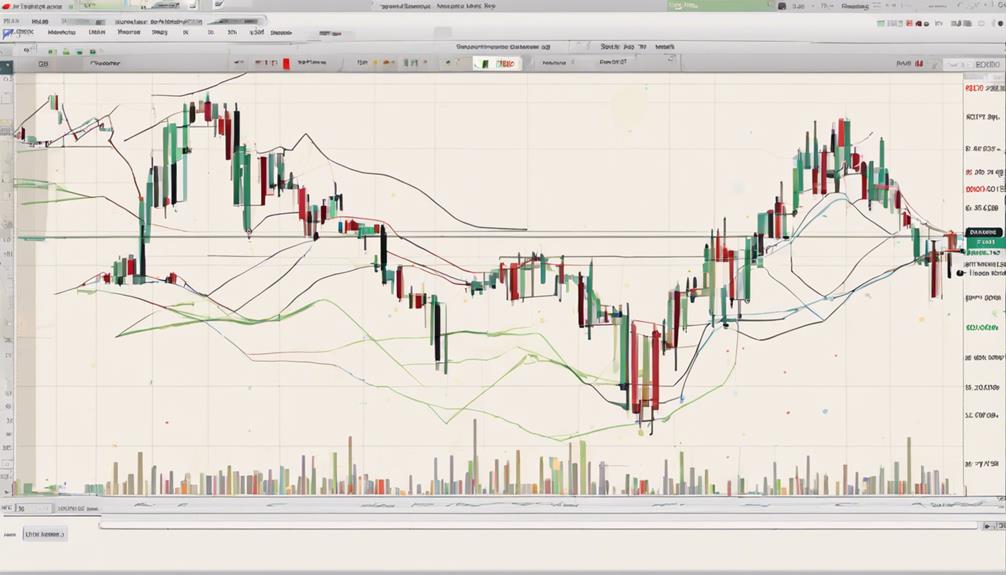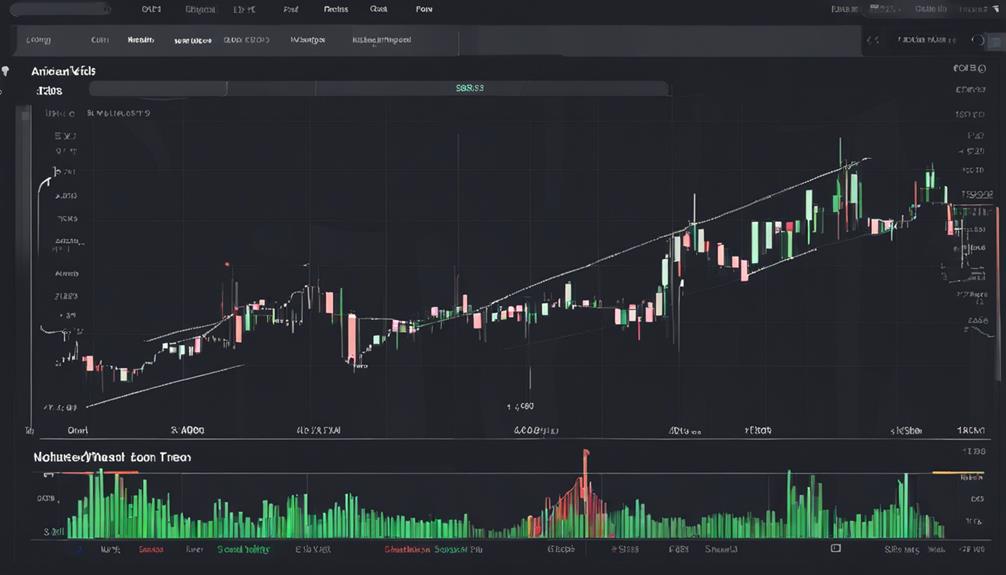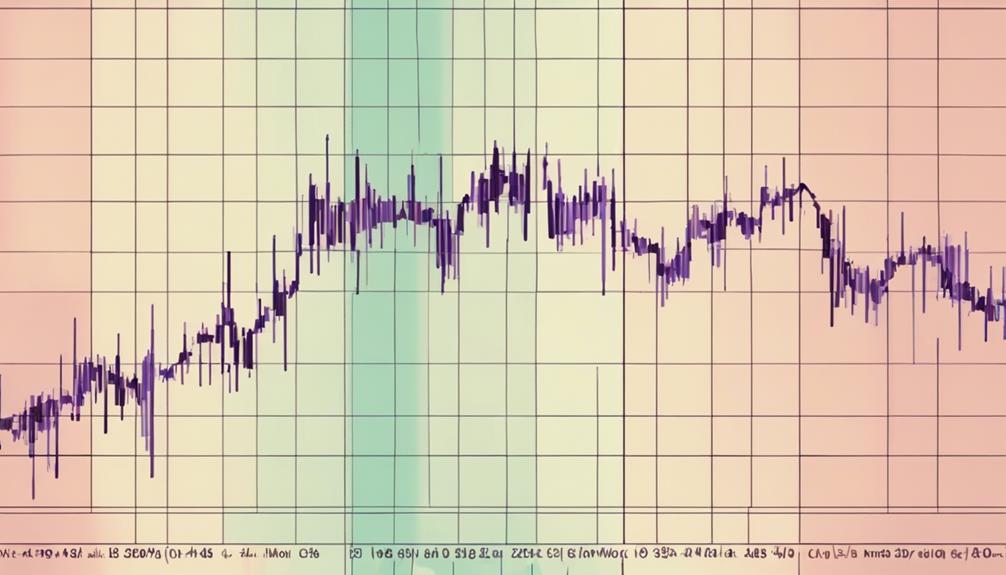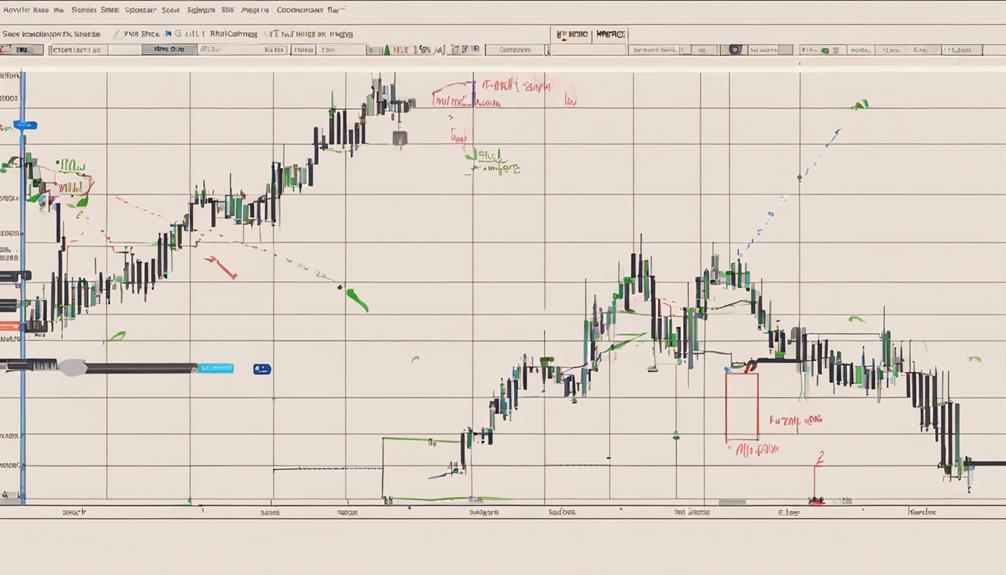You might think that analyzing markets with the Aroon Indicator sounds complex, but with a clear understanding and practical approach, you can effectively incorporate this tool into your trading strategies.
By grasping the basics of how the Aroon Indicator works, you can unlock its potential to enhance your market analysis and decision-making process.
Discover how to pinpoint trend changes, optimize entry and exit points, and fine-tune your trading strategies using this powerful indicator.
Explore the nuances of interpreting Aroon signals and leveraging its insights to navigate the dynamic landscape of financial markets.
Understanding the Aroon Indicator
Understanding the Aroon Indicator involves analyzing the relationship between the Aroon Up and Aroon Down lines to assess market trends effectively. The Aroon Indicator is a technical analysis tool used by traders to determine the strength of a trend and potential trading opportunities.
It consists of two lines, Aroon Up and Aroon Down, which help identify whether the market is in an uptrend, downtrend, or ranging. The Aroon Oscillator is calculated by finding the difference between these lines.
When Aroon Up is above Aroon Down, it suggests a bullish trend, while the opposite indicates a bearish trend. By interpreting these signals, traders can make informed decisions on entry and exit points, enhancing their trading strategies based on trend strength indicators.
Interpreting Aroon Indicator Signals

Analyzing Aroon Indicator signals provides traders with valuable insights into market trends and potential trading opportunities based on the relationship between the Aroon Up and Aroon Down lines. Aroon Up crossing above Aroon Down suggests a potential bullish trend, while Aroon Down surpassing 50 indicates a strengthening bearish trend.
Values close to 100 or 0 in the Aroon Indicator reflect strong trends. Crossovers between Aroon Up and Aroon Down lines help identify trend changes, signaling potential opportunities to enter or exit trades. Aroon Indicator values below 50 may indicate a period of consolidation.
Understanding these dynamics is essential for traders to measure the strength of trends and make informed decisions using Aroon Indicator Trading Strategies.
Aroon Indicator for Trend Identification

Assessing market trends using the Aroon Indicator involves analyzing the relationship between the Aroon Up and Aroon Down lines to identify potential uptrends or downtrends. The Aroon Indicator is valuable for traders as it helps in determining market direction and potential trend reversals.
Here are some key points to consider:
- Aroon Up > Aroon Down signifies an uptrend, while Aroon Down > Aroon Up indicates a downtrend.
- Crossovers between Aroon lines offer insights into potential trend changes.
- Understanding the time elapsed since the highest high and lowest low aids in gauging trend strength accurately.
Aroon Indicator for Market Analysis

To conduct thorough market analysis using the Aroon Indicator, focus on interpreting the relationship between the Aroon Up and Aroon Down lines to gauge trend direction and potential shifts. The Aroon Indicator acts as an oscillator, identifying trend strength and direction through these lines.
When the Aroon Up line is above the Aroon Down line, it indicates a bullish trend, while the opposite suggests a bearish trend. Crossovers between these lines can signal market trend changes, offering insights into potential entry points or exits.
Aroon Indicator Trading Strategies

With Aroon Indicator trading strategies, traders can effectively identify trend changes and strength in asset prices, enabling strategic entry and exit points in the market. By utilizing the Aroon Indicator, individuals can gauge the strength of a trend and make informed decisions based on market behavior. Some key points to consider when using the Aroon Indicator include:
- Aroon crossovers provide trading signals for entry and exit positions.
- Aroon Up crossing above Aroon Down signifies a bullish trend, while the opposite indicates a bearish trend.
- Monitoring the number of periods since the last Aroon crossover can help in predicting potential changes in the price of an asset.
These strategies are valuable for trend-following and maximizing profitability through technical analysis.
What are the Key Factors to Consider When Analyzing Markets with the Aroon Indicator?
When conducting aroon indicator market analysis strategies, it’s crucial to consider factors such as trend strength, timing of entry and exit points, and the overall market volatility. These key elements can provide valuable insights for making informed trading decisions and maximizing potential profits.
Frequently Asked Questions
How Do You Read an Aroon Indicator?
To read an Aroon Indicator, observe Aroon Up and Aroon Down lines. Near 100, Aroon Up signals strong uptrend; near 100, Aroon Down suggests strong downtrend. Crosses between lines indicate potential trend changes. Higher values show stronger momentum.
What Is the Best Strategy for Aroon?
To excel with Aroon, focus on Aroon Up surpassing Aroon Down for bullish trends. Use crossovers for trade entries and exits. Combine Aroon signals with other indicators for confirmation. Aroon readings over 50 signal strong uptrends.
How Accurate Is the Aroon Indicator?
The Aroon Indicator is highly accurate in assessing market trends and identifying potential reversals. Traders rely on its precise signals for informed decisions. Its crossovers provide reliable entry and exit points, enhancing trading effectiveness.
Is the Aroon Indicator Leading or Lagging?
Like a ship following the wake, the Aroon Indicator trails behind price movements, making it a lagging indicator. It gauges trend strength post-action. Use it alongside other tools for confirmation and to mitigate delays.
Conclusion
In conclusion, the Aroon Indicator is a powerful tool for market analysis, providing valuable insights into trend strength and potential reversals. By utilizing its signals effectively, traders can make informed decisions for entry and exit points, ultimately maximizing profits and minimizing risks.
Remember, combining the Aroon Indicator with other technical tools is key for confirmation and risk management. Trust in the Aroon Indicator's ability to navigate through market fluctuations like a seasoned captain steering through turbulent waters.
